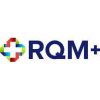Biomedical companies utilize the most modern research, diagnostic and drug manufacturing technologies available to bring life savings therapies to those that need them most. Unfortunately, many of these same enterprises are still tethered to an antiquated quality management system (QMS), which can impede drug delivery timelines, adversely affect profits, and stifle innovation and creativity.
The content and process management demands that compliance mandates place on highly-regulated organizations in sectors such as pharmaceutical, medical devices and biotechnology are high. A new medical product deemed unsafe or non-compliant by regulators will never reach patients, no matter how ground-breaking. In this regard, poor quality management procedures can make or break a company, especially if the violation leads to serious adverse events or a product recall.
Given the high priority that biomedical organizations must place on compliance management and the amount of documentation they must produce to support and fulfill regulatory mandates, risk is elevated for those operating with an antiquated QMS. The result is an environment where it is difficult to identify, assess, manage and reduce risks—and achieve overall visibility into the organization-wide operations and processes.
Modernization Delivers Business Value
A modern, cloud-based QMS can work in harmony with existing legacy systems, until the time is right for them to be retired. This provides a low-risk approach to modernization that allows life science firms to migrate content and data from old systems at a pace and manner that best fits their needs—versus the often painful “rip-and-replace” alternative.
When a biomedical firm modernizes its QMS, it can quickly deploy solutions and integrate with existing business applications—and do so easily and continually as needs and demands evolve over time. In this regard, it further serves to “future-proof” the QMS and IT landscape by enabling the organization to replace individual functional components when something better comes along. And because individual services can be replaced, rather than modifying an entire product, the impact is minimal. Also, if the QMS is component- based and cloud-native, individual parts of the platform architecture can be quickly scaled, up or down, without having to deploy additional hardware or software components.
The following is factors should be considered when modernizing a QMS.
- Modern. A QMS needs to be a part of the modern IT toolkit, not built more than 10 years ago (i.e., in a time before mobile and cloud became ubiquitous). In addition, it needs to be able to natively and effectively manage all the data and content types that we use today—documents, video, audio, etc. For example, in a clinical research scenario, it needs to do all of this for billions of items.
- Connected. Massive amounts of structured data and unstructured content often reside within multiple and disconnected quality management systems, platforms, applications, locations, and devices. This creates compliance and security risks and leaves employees with only some of the information they need to perform their jobs. With a modern QMS, information is not tethered to a specific location—it can be accessed and synced between various systems and devices with no duplication of content. This eliminates information silos and breaks down the barriers between users and their information. Structured data and unstructured content are freed from the confines of applications, platforms, and information silos.
- Personalized. The modern and connected aspects of a QMS are all about bringing IT and the business closer together—making sure the system scales and connects core business systems together. The final element brings the benefit of all of this behind the scenes work to the user—via personalization. Quite simply, this is about allowing users to store, view, edit and interact with the necessary information. That could be via the QMS interface, but equally it could be via a mobile app, a productivity app, a business solution like a customer relationship management (CRM) system, a web portal, or even a custom-built application to perform a specific task or process for the business. This personalization capability changes the dynamic of how users interact with information. In the past, the user has had to adapt how they work to find and interact with information. Now the system can be personalized to the exact requirements of the individual end users, and that is very powerful.
- Validated. All software solutions must be validated for life sciences companies to use them, and cloud solutions are no different – meaning that cloud vendors play an important role for firms that produce FDA-regulated products. This places greater onus on life sciences firms to ensure their cloud vendors not only understand the complex nuances of their market, but also that they’ve instituted software validation processes that adhere to a myriad of industry regulatory requirements. Work with vendors that employ a “continuous validation” approach that will support your modernization initiatives while simultaneously ensuring compliance.
Putting these four components together (modern, connected, personalized and validated) creates a scalable and flexible QMS that drives productivity and has a positive effect on the bottom line. And with that in place, the journey towards modernization is not a pipedream anymore, but a voyage that is well underway.







